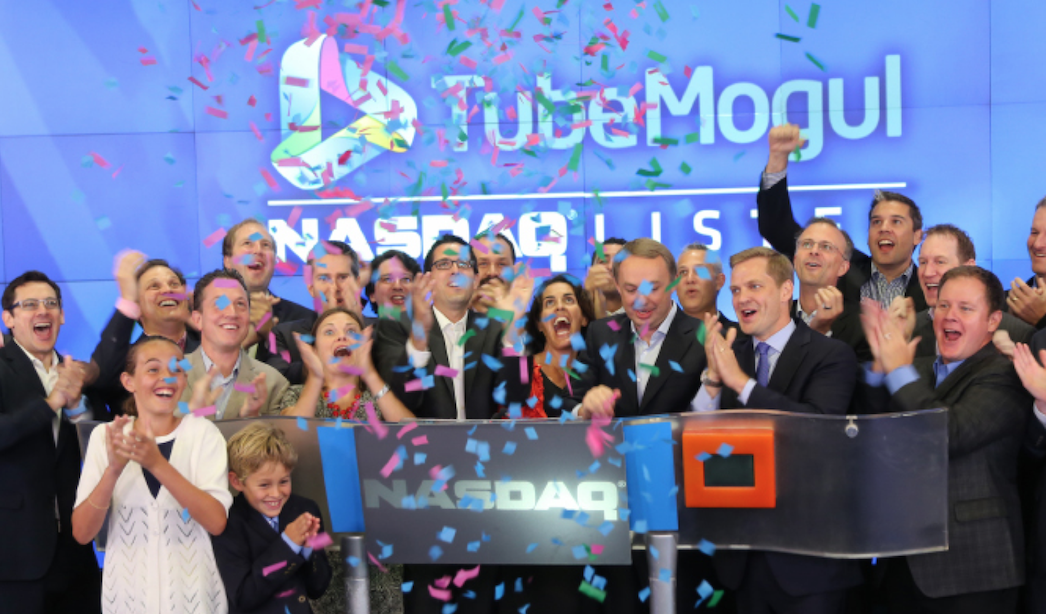
In college, Wilson majored in finance and marketing. But his turning point came when he attended the University of California’s Haas School of Business and met John Hughes, who would later help him launch a multimillion-dollar adtech company.
“I met John in entrepreneurship class,” Wilson said. “John was an introverted guy. He was almost like a da Vinci in that he could build anything with his hands and with software. He’s built most of the furniture that is in his house and even has a zip line that races through his backyard over his chicken coop, which he also built.”
The two MBA students became instant friends and hoped to start a company one day. They went on to win a competition for their business plan for an online video analytics tool. The prize: $22,500 in seed money. And just like that, a decade ago, TubeMogul was born.
“We saw an opportunity in the video space early on,” said Wilson, who is now VP and general manager of advertising at Adobe, which bought his company in November. “There is a reason advertisers start their annual budget-planning process with TV—video does the heavy lifting of persuading people.”
At first, TubeMogul was a tool for video producers who could use the platform to distribute video and track performance across the Web. But with where the market was going at the time, Wilson and Hughes soon realized that wouldn’t be enough.
“We’re talking 2007, when just 9% of U.S. consumers ages 12 to 64 watched online video daily,” Hughes told CMO.com. “But the world was changing. Apple had just launched its very first iPhone, Facebook had just become available to anyone with an email address, and Google made a big bet on video with the purchase of YouTube.”
In 2011 TubeMogul launched the first self-serve video demand-side platform (DSP). At the time, advertisers were heavily relying on black-box ad networks to scale their video buys.
“Our goal was to give more control and transparency back to advertisers,” Wilson said. “Using our platform, advertisers could see things like whether they were buying real video ads or video ads in banners, which were prevalent at the time.”
At first, TubeMogul got feedback that no advertisers or agency wanted to execute ad buys on their own. But by midyear the company had signed several marquis clients, including Lenovo and Cadreon, IPG’s programmatic arm. Fast forward to today, and it seems inconceivable that advertisers wouldn’t use software to automate all of their media execution over time.
**Enter Adobe
**Adobe’s $540 million acquisition of TubeMogul, which closed at the end of 2016, was meant to strengthen Adobe’s Media Optimizer solution by helping advertisers reach audiences across search, Facebook, display, and now, digital video, Snapchat, Instagram, Twitter, and linear TV. The Media Optimizer solution is part of Adobe’s Advertising Cloud and, according to Wilson, is the first end-to-end advertising platform that bridges the gaps between traditional TV and digital formats.
“The end result is marketers can centralize ad buying through software without compromising on where an ad runs or how it’s measured,” said Justin Merickel, VP of Adobe Media Optimizer.
It’s no secret that the lines between digital and traditional advertising are blurring, and the gray area between the two is a source of much of the industry’s broader growth in both viewership and ad dollars. Linear TV advertising is the most obvious example. Despite starting out as a relatively small portion of the $72 billion U.S. TV ad market, programmatic TV is forecasted to grow 206% this year, eclipsing $2.16 billion, and double in 2018 to $4.4 billion.
Similarly, other formats, such as outdoor (digital out-of-home), over-the-top TV, video-on-demand, and streaming radio, are all being bought programmatically today and are areas to watch going forward.
More than 70% of digital video ad budgets are forecasted to be bought through automated channels this year. As a term, “programmatic” just means using software used to automate what was once a manual process of media planning and buying and making it more data-driven, Wilson explained. But, according to Hughes, “the concerns arise when advertisers do not have full transparency into where ad dollars are going, how success is measured, or where data is being used.”
Back in January, P&G’s Marc Pritchard, owner of the world’s largest advertising budget, described the digital-media supply chain as “murky at best and fraudulent at worst.” According to Merickel, that’s what separates the new Adobe Media Optimizer from some other players in the industry.
“We have an established track record of transparency and openness,” he told CMO.com. “Our advertising platform does not have direct ownership in media or content, like other players. Plus, we have no media markups and transparent fees.”
Furthermore, marketers are drowning in data but often lack the tools to make it actionable, Merickel said. According to an Adobe study, more than half of marketers refer to that as one of their “biggest challenges.”
Adobe Advertising Cloud’s direct integration with Adobe Audience Manager means a 95% match rate for the audience segment that an advertiser can reach with its ads—double the industry average.
“It’s really simple: Adobe is the first—and only—marketing stack with a fully executable advertising layer,” Wilson said. “Advertisers can centralize all of their ad buying in a trusted platform that seamlessly connects to what they’re doing generally.”
This story originally appeared on CMO.com.

